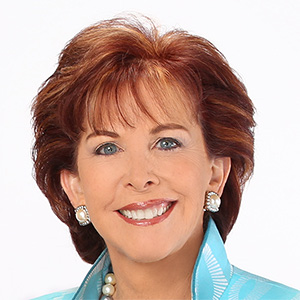Business
/ArcaMax

Social Security, an FAQ
There has been so much confusion about potential — and real — changes to Social Security that I am writing this column — and will consistently update it at TerrySavage.com — with the latest real-time, FACTUAL information, and answers to your questions.
I continue to believe that members of Congress from both parties will realize the ...Read more

The long-term care bet
What are the odds? It’s a question you should ask yourself when making any financial decision — from investing in the stock market to buying a house. What are the odds that this decision makes sense? What are the odds of profit? What are the odds of a loss?
If we each had a crystal ball, it would take all the uncertainty out of important ...Read more

An ode to gold
Gold has now traded at over $3,000. It’s a shame the “original gold bug,” James Dines, is not alive to see his forecast come true. Dines was a noted author, editor and precious metals mining expert, and this column is written in his memory — and in appreciation of the lessons he taught me so many years ago.
To sum up his philosophy, ...Read more

Terry Savage: Horror returns at Social Security
There’s good news and bad news for Social Security recipients. And since the bad news is actually horrible, I’ll start with that.
I hope you remember Social Security Horror Stories — a series of columns that led to a book written with Social Security expert Larry Kotlikoff, and an appearance on "60 Minutes."
We revealed that the federal ...Read more

How to think about recession risk
It’s been a significantly long time since the United States last went through a recession — longer than the average gap between economic slowdowns, if you don’t count the pandemic recession of 2020, which lasted only two months but saw GDP decline by about 20%.
If you don’t count the brief pandemic recession, it has now been an ...Read more

Terry Savage: Protect yourself from identity theft when filing taxes
The most frightening place for identity theft to occur is around your tax return. You typically find out when someone else has filed a tax return using your Social Security number — and likely claimed a refund.
But sometimes the Internal Revenue Service will catch the fraud first, or at least they will notify you that they suspect fraud. You�...Read more

In these times of uncertainty, where is your 'chicken money'?
The stock market seems to be taking uncertainty in stride, as I write this column. Neither economic concerns over the impact of tariffs nor the political concerns revolving around the rule of law have so far dented enthusiasm for American stocks.
It’s been a long time since we’ve seen a bear market, and this column is not in the business of...Read more

Terry Savage: Don't procrastinate on tax filing this year
It’s income tax time again, and this year it’s time to make a big change in how you file if you’re one of the small minority (less than 10%) who still file a paper return and then trek down to your local post office to send that return by registered mail — return receipt requested.
It’s time to file electronically. And the IRS has ...Read more

Terry Savage: Tariffs 101
Let’s talk about how tariffs work to impact the economy — without any political considerations — just considering the potential economic consequences of tariffs, and how they impact the trade relationships between countries.
In early February, the headlines revolved around potential tariffs that the United States would charge on goods ...Read more

Housing affordability is becoming a major personal, political crisis
Housing affordability is going to be a huge topic in both personal finance and politics in the year ahead. It’s not your imagination that housing — whether you own or rent — is taking a bigger bite out of your income. The question is what you — and the government — can or should do about it.
The Wall Street Journal recently examined ...Read more

Roth conversions — a good idea?
Would you send the government a big check this year — in return for a potentially far larger future tax break?
That’s the simple and essential premise of Roth conversions — paying taxes now on regular IRAs, 401(k)s and other tax-deferred retirement accounts (except those from your current job) in exchange for tax-free withdrawals of those...Read more

Terry Savage: Get an organized life
Quick, think about who would know where everything is if you were in an accident or had a stroke that left you unable to communicate. By “everything” I mean your healthcare power of attorney, your health insurance documents and even the password to your cellphone so they can notify friends and family.
While you may have all that information...Read more

Terry Savage: Dealing with debt in the new year
Americans enter 2025 with record amounts of credit card debt — and with an average credit card interest rate of 22.3%! That kind of interest can bury you, destroying all your efforts to get ahead, undermining the hours you put in at work, and painfully demonstrating that the system is destroying your hope.
STOP! There is a way out of the debt...Read more










